Here's the text.
Invasive species of Yokohama
Last Updated November 7, 2024
Invasive species of Yokohama
"Exotic species" refers to organisms that were not originally in the area but came in from other areas through human activities. In Yokohama, there are many creatures that originally lived and did not grow in Yokohama, such as those brought in as pets and became wild or those that were attached to ships. The figure below shows the number and ratio of alien species among organisms (fish, benthic animals, and adhering algae) confirmed in biological flora surveys in rivers. The number of species of living organisms in rivers is increasing overall along with the improvement of the water environment, but the proportion of alien species is gradually increasing, and biodiversity unique to Yokohama is being lost.
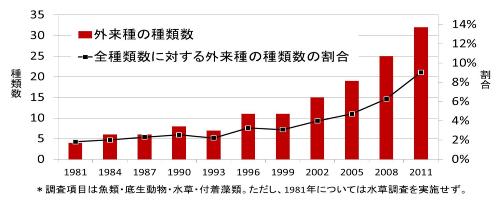
Invasive species found in the city
In the city, countless alien species inhabit and grow, some of them are here.
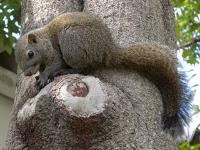
Kurihara Squirrel (Taiwan Squirrel)
It lives mainly in the southern part of the city and is expanding its distribution. There is damage such as peeling the bark or biting the telephone line.
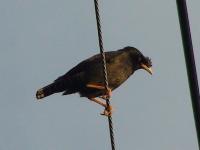
Mint butterfly
A group of starlings found mainly in the southern part of the city. It was painted in porcelain and barrier paintings during the Edo period, but originally did not inhabit Yokohama.
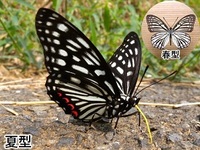
Red horsetail
Butterflies that are artificially dispersed and whose distribution is expanding. It can be found throughout the city. The pattern varies depending on the season.
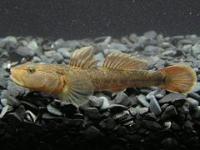
Kawayoshinobori
A group of gobys distributed in West Japan. Originally, he did not live in Yokohama and was an exotic species in Japan.
Some alien species are subject to control as damage to or may damage ecosystems, human life and body, agriculture, forestry and fisheries, but have once spread outdoors It is difficult to eradicate alien species and requires a great deal of effort.
In order to connect Yokohama-like biodiversity to future generations, the main principle is "do not enter," "do not throw away," and "do not spread" alien species.
About raccoon, hakubushiin, etc. (page of environmental activity business section)
Inquiries to this page
Environmental Science Research Institute, Environmental Conservation Department, Green Environment Bureau
Telephone: 045-453-2550
Telephone: 045-453-2550
Fax: 045-453-2560
Email address: mk-kanken@city.yokohama.lg.jp
Page ID: 554-603-684







